Nonlinear Fractional Jaulent-Miodek and Whitham-Broer-Kaup Equations within Sumudu Transform
Abstract
We solve the system of nonlinear fractional Jaulent-Miodek and Whitham-Broer-Kaup equations via the Sumudu transform homotopy method (STHPM). The method is easy to apply, accurate, and reliable.
1. Introduction
Nonlinear partial differential equations arise in various areas of physics, mathematics, and engineering [1–4]. We notice that in fluid dynamics, the nonlinear evolution equations show up in the context of shallow water waves. Some of the commonly studied equations are the Korteweg-de Vries (KdV) equation, modified KdV equation, Boussinesq equation [5], Green-Naghdi equation, Gardeners equation, and Whitham-Broer-Kaup and Jaulent-Miodek (JM) equations. Analytical solutions of these equations are usually not available. Since only limited classes of equations are solved by analytical means, numerical solution of these nonlinear partial differential equations is of practical importance. Therefore, finding new methods and techniques to deal with these type of equations is still an open problem in this area. The purpose of this paper is to find an approximated solution for the system of fractional Jaulent-Miodek and Whitham-Broer-Kaup equations (FWBK) via the Sumudu transform method. The fractional systems of partial differential equations under investigation here are given below.
The paper is organized as follows. In Section 2, we introduce briefly some of the basic tools of fractional order and of the Sumudu transform method. We show the numerical results in Section 4. The conclusions can be seen in Section 5.
2. Basic Tools
2.1. Properties and Definitions
Definition 1 (see [15]–[24].)A real function f(x), x > 0, is said to be in the space Cμ, µ ∈ ℝ if there exists a real number p > µ, such that f(x) = xph(x), where h(x) ∈ C[0, ∞), and it is said to be in space if f(m) ∈ Cμ, m ∈ ℕ.
Definition 2 (see [15]–[24].)The Riemann-Liouville fractional integral operator of order α ≥ 0, of a function f ∈ Cμ, μ ≥ −1, is defined as
For f ∈ Cμ, μ ≥ −1, α, β ≥ 0 and γ > −1
Definition 5. The Jumarie Fractional order derivative is given as follows [24]:
Lemma 6. If m − 1 < α ≤ m, m ∈ ℕ and , μ ≥ −1, then
Definition 7 (partial derivatives of fractional order [15, 16, 19]). Assume now that f(x) is a function of n variables xi, i = 1, …, n also of class C on D ∈ ℝn. As an extension of Definition 3, we define partial derivative of order α for f with respect to xi the function
3. Background of Sumudu Transform
Definition 8 (see [25].)The Sumudu transform of a function f(t), defined for all real numbers t ≥ 0, is the function Fs(u), defined by
Theorem 9 (see [26].)Let G(u) be the Sumudu transform of f (t) such that
- (i)
(G(1/s)/s) is a meromorphic function, with singularities having Re[s] ≤ γ;
- (ii)
there exist a circular region Γ with radius R and positive constants M and K with |G(1/s)/s| < MR−K, then the function f(t) is given by
(12)
For the proof see [26].
3.1. Basics of the Sumudu Transform Homotopy Perturbation Method
4. Applications
In this section, we apply this method for solving the system of the fractional differential equation. We will start with (1).
4.1. Approximate Solution of (1)
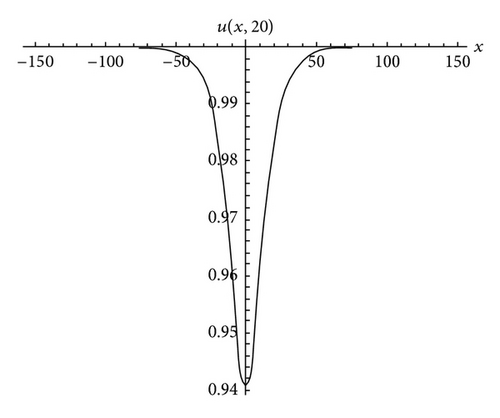
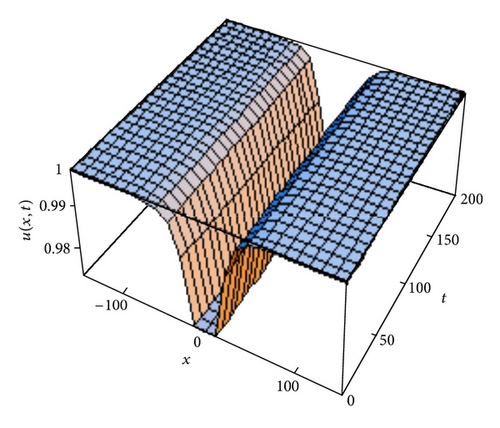
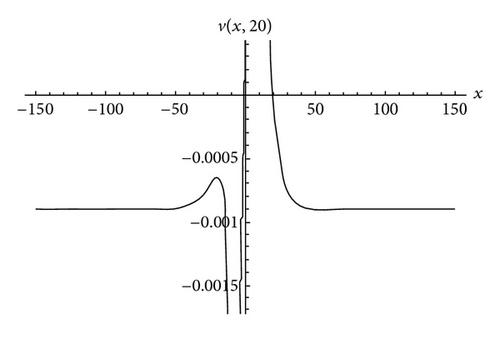
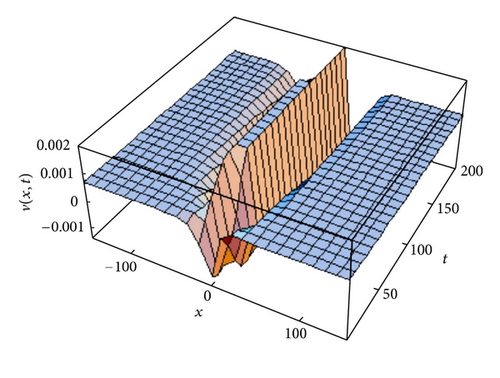
4.2. Approximate Solution of (2)
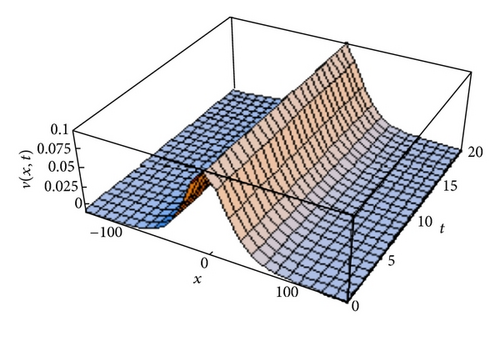
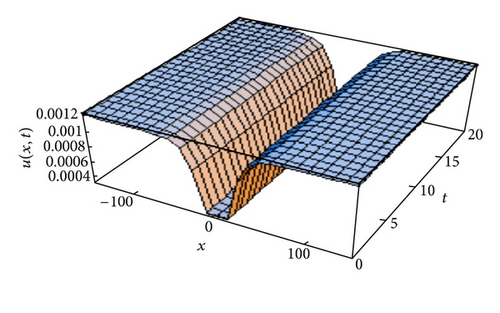
5. Conclusion
We derived approximated solutions of nonlinear fractional Jaulent-Miodek and Whitham-Broer-Kaup equations using the relatively new analytical technique the STHPM. We presented the brief history and some properties of fractional derivative concept. It is demonstrated that STHPM is a powerful and efficient tool for the system of FPDEs. In addition, the calculations involved in STHPM are very simple and straightforward.
The STHPM is chosen to solve this nonlinear problem because of the following advantages that the method has over the existing methods. This method does not require the linearization or assumptions of weak nonlinearity. The solutions are not generated in the form of general solution as in the Adomian decomposition method (ADM) [33, 34]. No correction functional or Lagrange multiplier is required in the case of the variational iteration method [35, 36]. It is more realistic compared to the method of simplifying the physical problems. If the exact solution of the partial differential equation exists, the approximated solution via the method converges to the exact solution. STHPM provides us with a convenient way to control the convergence of approximation series without adapting h, as in the case of [37] which is a fundamental qualitative difference in the analysis between STHPM and other methods. And also there is nothing like solving a partial differential equation after comparing the terms of same power of p like in the case of homotopy perturbation method (HPM) [38].




